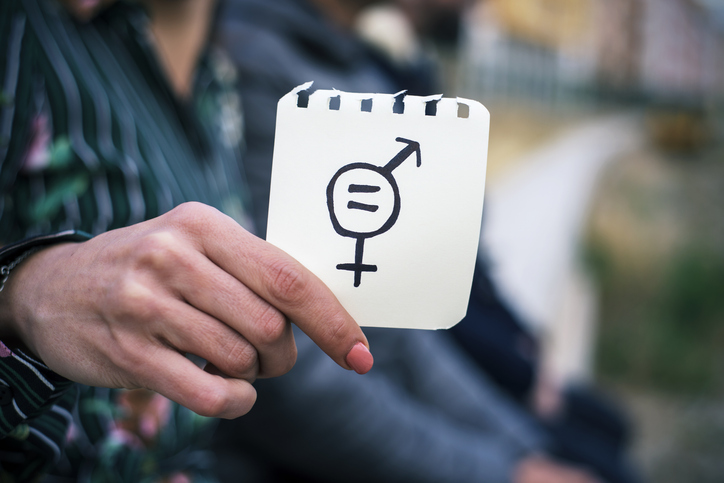Diversity is a key ingredient for successful businesses, yet Australian law firms remain culturally bland.
“Close your eyes and picture a judge. What do you see?” The question comes from Katrina Rathie, Partner in Charge at King & Wood Mallesons (KWM) in Sydney. Rathie has faced countless judges during her 30 years as a litigator on the intellectual property team at KWM, so she might be expected to offer an alternative to the traditional stereotype that springs to mind. She doesn’t.
“You picture a wig and a judge’s robe,” says Rathie. “And it’s worn by a white, Anglo-Saxon male.”
Rathie, 54, is a Chinese-Australian lawyer whose family migrated to Australia in 1937. Her great-grandmother came from the generation of Chinese women who bound their feet in the name of beauty, and her grandparents had 15 children from their traditional arranged marriage.
Almost 80 years on, Rathie’s vision of a modern judge describes the same person that her family might have imagined when they stepped off their slow boat to Australia. It is a telling reflection of how little has changed in the legal profession, despite Australia growing into one of the most multicultural and diverse countries in the world.
The Diversity Council of Australia says Asian Australians account for almost 10 per cent of the Australian population, yet make up just 0.8 per cent of the judiciary. Thirty-four per cent of the judiciary is female, according to Australian Women Lawyers, despite the Australian Bureau of Statistics estimating that females outnumber males in Australia by about 1 million.
The white, male stereotype appears to dominate not only the judiciary, but the Australian legal profession more broadly. According to the Federal Department of Education and Training, female law graduates are outnumbering males at record levels, yet women make up just 24 per cent of partners in law firms, according to the 2016 Law Partnership Survey.
The figures are worse for Asian Australians – just 3.1 per cent of partners in law firms and 1.6 per cent of barristers are Asian, according to the Diversity Council of Australia. While cracks may be starting to appear in the law’s glass ceiling, the notion of an anti-Asian “bamboo ceiling” presents a different problem.
As an Asian Australian female, Rathie faced the double-header of diversity barriers when she entered the law 30 years ago.
“I was the first Chinese-background person at my school in Ascham in Sydney,” she recalls. “When I went to study commerce/law at the University of NSW, I’d estimate there were fewer than 10 people in our entire cohort who had any Asian background. I could literally name them.”
Rathie has three children and her eldest son, Jack, is following in her footsteps and studying commerce/law at UNSW. As a self-proclaimed “halfie” – a half-Asian, half-white Australian mix of his Chinese mother and Queensland-born father – Rathie says he tells her he is “one of the whitest” in his class.
UNSW says about 8 per cent of its law students list their country of residency in north, south and Southeast Asian countries. Of the remaining 92 per cent, many students have parents or grandparents with Asian cultural heritage – however, exact figures showing how many are unavailable. At UNSW, 58 per cent of law graduates are female and about 15 per cent are international students. So why is the diversity ratio so skewed at higher levels in the profession?
“I think it often comes down to structural issues in law firms and the profession, including the Bar,” says George Williams, Dean of Law at UNSW. “Very significant barriers remain there to people with talent from other backgrounds who are achieving the same measure of success as others. It might be because flexible working arrangements aren’t available, or it might be because people in management positions have a natural tendency to employ people similar to themselves. It’s an inbuilt vice.”
Williams is right – studies have shown that, when presented with the identical job applications of two equally qualified candidates, hiring managers are more likely to choose a male over a female name for interview.
A 2014 study by Hays Recruitment found that hiring managers most often preferred the candidate who was similar to them, but were still at least 15 per cent more likely to interview a “Simon” over a “Susan”. A 2014 survey of 500 managers by law firm Slater & Gordon showed that one third of managers would rather employ a man in his 20s or 30s over a woman of the same age, for fear of maternity leave.
Rathie defied substantial odds to make partner at one of Australia’s big six law firms. Along with her female Chief Executive Partner at KWM in Australia, Sue Kench, Rathie wants to prove that women can flip the script and be successful in the traditionally male-dominated arena of top-tier law. She doesn’t believe in quotas for gender or race-based hiring in law firms, but instead supports the use of targets for equality. Because, she says, “What gets measured gets done.”
“I don’t believe in quotas because it creates this tall-poppy syndrome,” says Rathie. “I think calling out quotas makes you a special interest group and draws particular attention to yourself, which may or may not be warranted.
“Having targets is better. It sets a particular goal to aspire to, so that everyone will strive and try to push to get there. But it still has the underlying tone of meritocracy, rather than, ‘You’re going to get there because you’re an Asian woman’.”
Rathie also wants to see more diversity in leadership and partnership roles, to show women, Asian Australians and other minorities that they can be successful in the law, despite current odds being stacked against them. One important role model she points to is Trish Henry, a KWM partner who was promoted to partnership while she was on maternity leave and has always worked part-time to balance her work and family life.
“Michael Kirby once said, ‘We [women and minorities] just need to be a little bit more pushy,’” says Rathie.
“That’s what I want to do – I want to put my foot on the accelerator and drive the change. Because diversity is good for women, it’s good for Asians, it’s good for LGBTIQ identifiers, it’s good for Indigenous people. And above all, it’s good for the firm. Having a diverse workplace is a key driver of innovation and growth.”
Lawyers are no less human than politicians and the same influences and biases affect their talent decisions. This could explain why diversity is fading at the pointy tip of the legal professional pyramid, and supports the need for wider use of techniques such as unconscious bias training and blind reading of job applications. It also negates the “merit argument” that says cream rises to the top without assistance, and that talented people will succeed notwithstanding their background, culture or gender.
David Anthony is the National Chair of a new initiative by Corrs Chambers Westgarth to create a LGBTIQ network for lawyers, known as LGBTI@Corrs. Anthony says that gender identity and sexual orientation are not often discussed in the debate around diversity, but it is important for law firms to acknowledge these aspects and aim to dissipate any silent prejudices that might exist in relation to LGBTIQ lawyers.
“In my view there has been, in the past, a ‘rainbow ceiling’ that has to a certain extent held back LGBTIQ people in the legal profession,” says Anthony. “I think that is starting to change as people become more aware of the LGBTIQ community and LGBTIQ individuals become more comfortable with being ‘out’ in the workplace.
“In the legal profession there are a number of fantastic out role models, including most famously Michael Kirby, who have trail-blazed a pathway forward. It means a great deal to be able to be out at work and to bring your full identity into the workplace.”
Studies have shown that workplace diversity is a no-brainer for business. A seven-year study published in the Journal of Economics and Management Strategy found that shifting from an all-male or all-female office to one evenly split along gender lines could increase revenue by about 41 per cent. Research by the Victorian Equal Opportunity and Human Rights Commission in 2013 found that if just 10 per cent more employees felt included, a company could increase work attendance by almost one day per year per employee.
With the case for diversity stronger than ever, the Law Society of NSW has established a new Diversity and Inclusion Committee to promote diversity, equality and inclusion in the legal profession. The committee is chaired by Juliana Warner, Managing Partner of Herbert Smith Freehills in Sydney, and includes David Anthony.Annmarie Lumsden, Director of Strategic Policy and Planning, Legal Aid NSW is Deputy Chair, and lawyers Elizabeth Bartlett, Ruimin Gao, Danielle Kelly and Diana Chang, the first female managing partner at Clifford Chance, are among the 21 influential committee members. The committee had its first meeting in June, and is aiming to announce a Law Society charter for the advancement of women in law in coming months.




